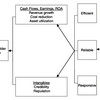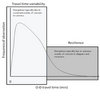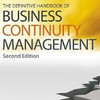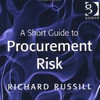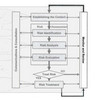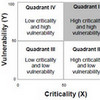 What do you when your major customer goes bust? How do you cope with finding a new business partner? How do you react when a major competitor is no more? I don’t know, but I guess many businesses catering to SAAB in Trollhättan in Sweden will be asking these questions in the next couple of days. Well, they’ve had a year to prepare for SAAB’s demise. Who would have thought that when GM bought SAAB in 1989, that it would take no more than 20 years for GM to run SAAB into the ground, taking with it 60 years of proud Swedish car manufacturing history. SAAB is history, but what will happen to its supply chain?
What do you when your major customer goes bust? How do you cope with finding a new business partner? How do you react when a major competitor is no more? I don’t know, but I guess many businesses catering to SAAB in Trollhättan in Sweden will be asking these questions in the next couple of days. Well, they’ve had a year to prepare for SAAB’s demise. Who would have thought that when GM bought SAAB in 1989, that it would take no more than 20 years for GM to run SAAB into the ground, taking with it 60 years of proud Swedish car manufacturing history. SAAB is history, but what will happen to its supply chain?
My lost SAAB
 SAAB started production in 1949 and has always been strong on innovation, but 60 years later, on December 18th 2009 SAAB entered the history books when General Motors announced that it will wind-down Saab’s operations on a press release on their website. Sad…and I never got around to buying my own SAAB. I always wanted to have one, but I guess they will be on sale now, won’t they? As it happens, the first car my Dad bought was actually a SAAB 96, in 1966.
SAAB started production in 1949 and has always been strong on innovation, but 60 years later, on December 18th 2009 SAAB entered the history books when General Motors announced that it will wind-down Saab’s operations on a press release on their website. Sad…and I never got around to buying my own SAAB. I always wanted to have one, but I guess they will be on sale now, won’t they? As it happens, the first car my Dad bought was actually a SAAB 96, in 1966.
Business continuity

It’s not just SAAB that winds down, it’s also their supply chain and the network of suppliers and sub-suppliers who are wholly dependent on SAAB for their business. Do they have a continuity plan for a case like this? What about the local community and the city of Trollhättan where the plant is located, did they ever foresee this? A true Black Swan Event indeed. This reminds me of my job in the late 80s, when I was working with several regional government agencies in Norway, and where my job was to audit the risk assessment and disaster management plans of the local government authorities. The consequences of the closure of the cornerstone business was one of the scenarios we expected the communities to have plans for, but not on such a grand scale. According to Swedish media, the plant itself employs “only 3200” people, but the ripple-effect criss-crossing the now defunct supply chain will potentially affect 61,000 jobs all over Sweden. And how many jobs overseas? This calls for some serious business continuity plans and some serious resilience plans. Maybe Ken Simpson can help?
Resilient organisations
The New Zealand research project Resilient Organisations is another thing that comes to my mind here. Resilience is here viewed a 3-fold construct, working in a complex, dynamic and interconnected fashion depending on 1) keystone vulnerabilities, criticality and preparedness, 2) situation awareness, stemming from an assessment of the keystone vulnerabilities, and 3) adaptive capacity. Resilience, in essence, is the ability to survive disruptive changes despite severe impact. I can only hope that the businesses affected by SAAB’s demise are resilient enough to be able to survive and bounce back. It will be interesting to see…and it will be a great case study for supply chain risk researchers.
Links
- gm.com: SAAB sale cannot be concluded
- tu.no: GM legger ned SAAB
- tv2nyhetene.no: Legger ned SAAB
Related
- husdal.com: Brand reputation and supply chain risk

